Plans to convert a former Royal Air Force E-3D Sentry into a dedicated training aircraft for the US Navy’s E-6B Mercury fleet have been scrapped, with the airframe now set for dismantling and part harvesting under a contract awarded to Northrop Grumman.
The aircraft, Bureau Number 170508, was sold to the US following its retirement from RAF service and re-designated TE-6B, intended to become an In-Flight Trainer (IFT) platform to support operations of the Navy’s nuclear command-and-control aircraft. But on 14 May 2025, Naval Air Systems Command (NAVAIR) issued a $2.98 million contract to Northrop Grumman Systems Corporation for its disposal instead.
According to the official notice on SAM.gov, the contract was awarded on a sole-source basis “for part harvesting and disposal of the TE-6B aircraft, Bureau Number (BuNo) 170508 (formerly an E-3D Aircraft).” The notice further states:
“The authority permitting other than full and open competition is provided in 10 U.S.C. 3204 (a)(1), Only One Responsible Source and No Other Supplies or Services will Satisfy Agency Requirements.”
The action was awarded under the Basic Ordering Agreement N0001920G0005, with the notice describing the aircraft as “originally procured for use as an In-Flight Trainer (IFT) platform, for the E-6B community.” This work will be carried out in Lake Charles, Louisiana, with Northrop Grumman tasked with salvaging usable components and overseeing the complete disposal of the airframe.
The E-6B Mercury is the US Navy’s airborne command post, based on the Boeing 707 airframe and serving a critical role in nuclear deterrence. Operated by Strategic Communications Wing ONE, the aircraft supports both the TACAMO (Take Charge and Move Out) mission—relaying instructions to submerged nuclear submarines—and the US Strategic Command’s Airborne Command Post role. Given the platform’s continuous airborne alert role and highly specialised systems, a dedicated in-flight trainer like the TE-6B had been envisioned to ease operational demands on the frontline fleet. Its cancellation may now place additional pressure on the remaining E-6Bs or reflect shifts toward alternative training solutions.
This marks the end of the TE-6B designation, which had applied solely to this one aircraft. The US Navy’s interest in repurposing the Sentry was seen as a rare second life for a retired RAF platform. This quiet reversal of plans suggests either technical hurdles or changing priorities in the evolving architecture of airborne nuclear command and control.


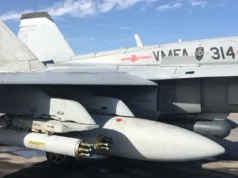

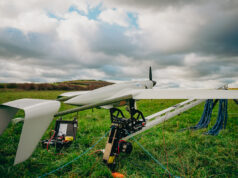
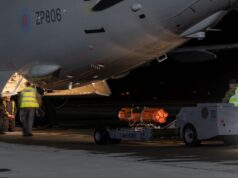
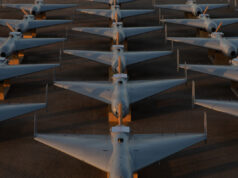
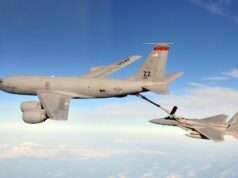
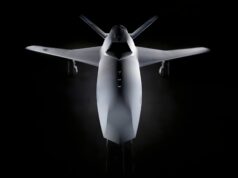

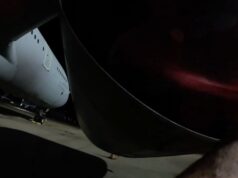
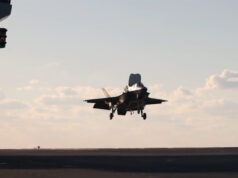

I heard the Engineers were totally dumbfounded by the metric/Imperial conversion measurements.
“Give an inch, take a 1.62 KM”.
Funny but not true.
E-3D Sentry Means American made, on Boeing 707 airframe, returning to Northrop Grumman in Lake Charles, Louisiana, so it was never metric..
Well blow me down with a feather, I never knew.
Of coarse the Westlands Apache build went smoothly, didn’t it ?
Pass the 7/8ths metric.
Probably was absolutely knackered from intensive use.
“ The US Navy’s interest in repurposing the Sentry was seen as a rare second life for a retired RAF platform.”
This isn’t really true as C130 were sold off; others are after the T1 Typhoons; UKR had 3(?) Sea King.
BTW I wouldn’t be too surprised if the Chinooks being retired didn’t gain a 2nd life.
The most puzzling thing is why the E-3 and E-6 were developed using an airframe that was already obsolete, the 707. That the 707 went out of production in 1978 meant that spares were going to be an issue as the military derivatives would be flying for decades after retirement from commercial aviation.
Similar is happening again with E-7 and P-8, which are based on the 737-NG which has also ceased production. (That said, I wouldn’t advocate using the 737-MAX given its issues…)
The issue is the frame being suitable for the mods including weight, point loads and power.
Surely more modern aircraft designs have more power, so why use using designs that are already end of life?
It would have made more sense to have used a Airbus derivative converted to an ASW role- European manufacture, more upto date than B737s, no lack of spare parts, commonality of spares with A330s / Voyagers
European manufacturer would mean the US would never buy one. Wedgetail was developed with a large US order in mind.
With Trump in the WH who cares about the US? Europe needs to look after itself
For sure but that involves european countries agreeing to cooperate and also multiple nations looking to buy at the same time to cover r&d.
The replacement of the typhoon we have 2 European projects and we have the US trying to talk Japan out of the UK one, which appears to be having edgeway.
Post trump this might become easier but I suspect the cooperation won’t last as ever nation wants it their own way with their own work share and own companies involved making things way more expensive.
The U.S. knows how to piss away money on defence.. in sure it’s where the MOD started to get lessons from.
Surely an ex Qatar Airways aircraft can be donated by grateful allies in the middle east now that the commander in chief has shown that there’s no conflict with national security…